Conditions of the Jaws, Facial Skeleton, and Skull
Alaska Center For Oral + Facial Surgery
Alaska's Only AAAHC Accredited Oral & Maxillofacial Surgery Practice

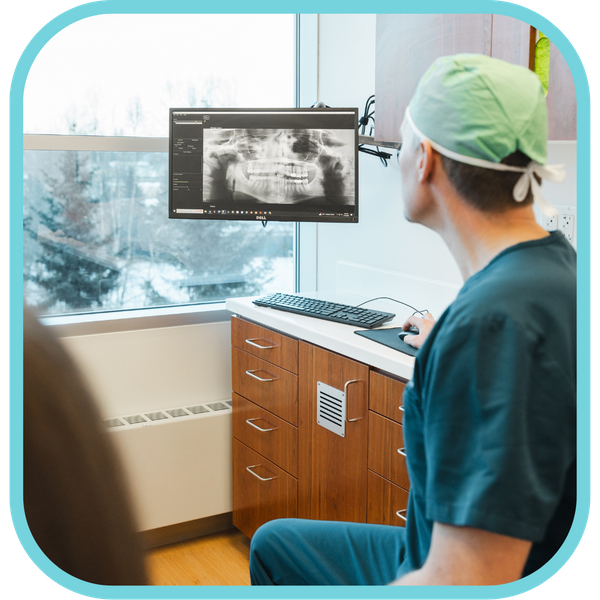
CONDITIONS OF THE JAWS, FACIAL SKELETON, AND SKULL
Jaw surgery, also commonly called orthognathic surgery, is sometimes necessary to reposition the facial skeleton when orthodontic (teeth) movement alone is insufficient to achieve proper facial form and function. Corrective jaw surgery is completed to address issues including improper bite, jaw malposition or asymmetry, and obstructive breathing patterns. Any of these symptoms can exist at birth, be acquired after birth as a result of hereditary or environmental influences, or as a result of trauma to the face.
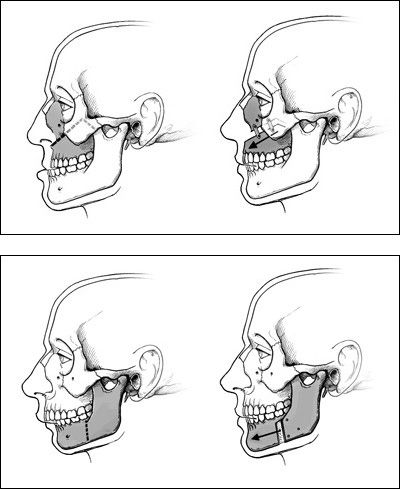
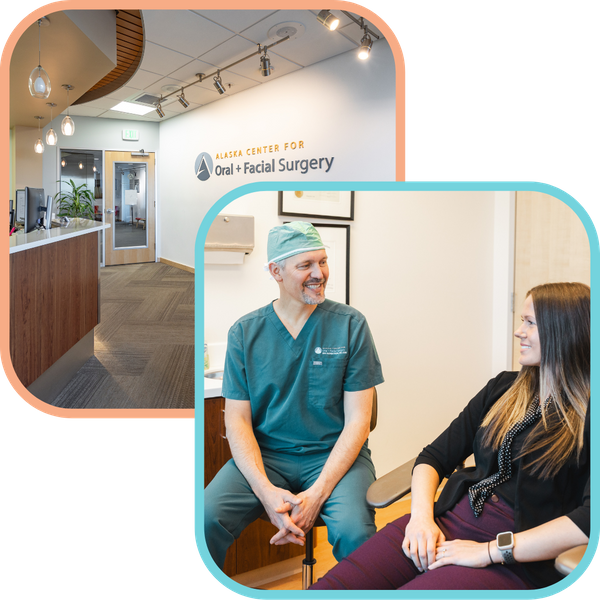
Initial Consult
Initial consultation with your oral and maxillofacial surgeon will involve a thorough clinical and radiographic examination to determine the indications and benefits of jaw surgery. When you are fully informed about the aspects of your care, you and your care team (most commonly including a referring dentist and orthodontist) will discuss your personalized plan and make the decision to proceed with treatment together. In preparation for your operation, your surgeon will use cutting edge computer modeling techniques to plan your surgery and show you exactly how your jaw and teeth will align after your procedure.
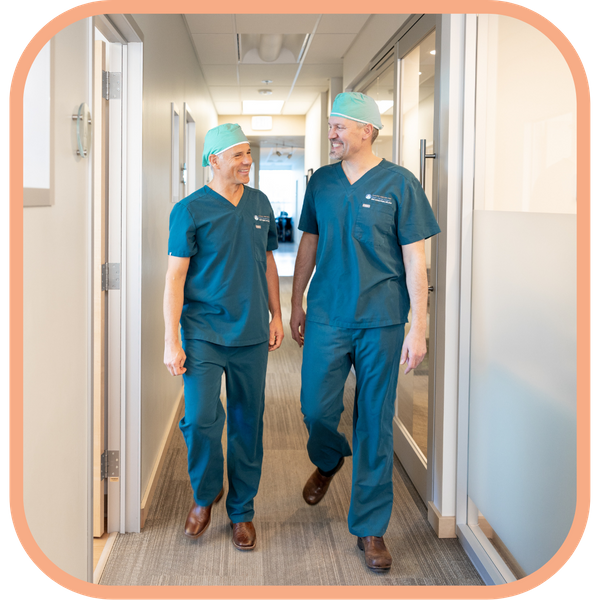
Surgery Day
On the day of surgery, you will receive a general anesthetic from an experienced anesthesiologist at either a local hospital or our accredited in-office surgery center. Once your jaws have been ideally positioned, they will be secured with small, biocompatible plates and screws, with no requirement to have your jaws wired shut. After you wake up from your surgery, you will be allowed to return home that day to recover in your own bed with a planned follow-up in our clinic about twenty-four hours later.
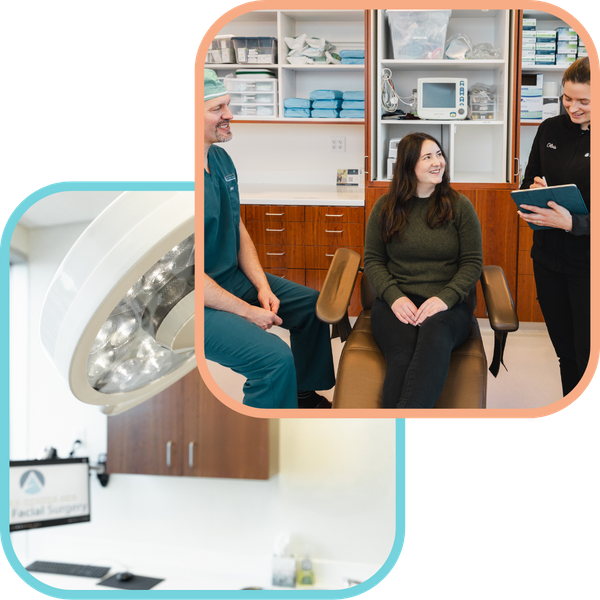
Recovery
Your recovery period will commonly involve one to three weeks off from school or work, with gradual resolution of facial swelling over this time. You will be given diet instructions, which will evolve from liquid to soft chew intake for the first six weeks after surgery. At this point, you will most likely be ready to return to a regular diet and resume the final stages of your orthodontic care. Our surgeons perform many other jaw procedures, including:
Skeletal growth problems, ie: jaw size discrepancies, asymmetries, too small or too large jaws (or chin)
Corrective jaw surgery
Obstructive sleep apnea jaw surgery
Tumor or cyst removal
Bone infections
Trauma surgery and jaw reconstruction
Jaw joint pathology/TMJ problems
Malocclusions or bite problems
Cheek and/or chin implants or augmentation
Orthognathic and Reconstructive Surgery Common Terms and Definitions
Bone
Harvesting of bone (other than Iliac Crest Bone) as appropriate for the reconstruction case in the maxillofacial environment: Using bone from a separate part of the body to add to areas of decreased bone in the jaws
Rib grafting
Using a patient’s rib bone to repair a defect in the jawbone
Bone from the outer table of the calvarium
Using the outer portion of a patient’s skull to repair a defect of the jawbone
Bone Graft (Iliac Crest Bone Graft)
Using part of the patient’s hip bone to repair a defect of the jaw bone (one of the most common sources of bone graft)
Correction and/or reconstruction of dentofacial deformities
Correction of the position, size, shape, or orientation of the jaw bone(s)
Cranial Vault Reshaping
Surgical or orthotic (helmet) correction of the misshapen head
Craniosynostosis Repair
Surgical correction of pediatric head deformities due to early cranial suture fusion
Facial implants (for placement of facial/orbital prosthesis)
Placement of titanium implants into the bones of the face or head in order to hold prostheses
Distraction Osteogenesis
Making a shorter bone into a longer bone by first cutting it, then slowly pulling the ends apart with a turning device and allowing new bone to fill in during the lengthening process (regularly done to increase the dimensions of the facial bones)
Genioglossus Advancement for Sleep Apnea
Advancement of the chin and associated oral muscles in order to improve nighttime breathing
Genioplasty (advancement, reduction, augmentation)
Movement/reconstruction of the chin in order to create balance and symmetry with the rest of the face
Implants (related to correction or reconstruction (maxillofacial))
Placement of a solid, bio-compatible material under the skin to improve facial form
Mandibular osteotomies (total and/or segmental)
The process of cutting and moving the lower jawbone to improve facial form and function
Maxillary/Midface segmental osteotomies
The process of cutting and moving the upper jaw bone to improve facial form and function
Maxillomandibular Advancement for Sleep Apnea
Surgery to advance the upper and lower jaws together in order to improve nighttime breathing
Nasal-septo-rhinoplasty associated with orthognathic surgery, facial reconstruction, or cleft surgery
Surgical repair of nasal deformity
Primary or Secondary Bone Graft for Alveolar Cleft
Reconstruction of the hole in “gums” seen in patients with cleft lip and/or palate
Primary or Secondary Closure of Cleft Palate and/or Alveolus
Reconstruction of the hole in the “gums” and roof of mouth seen in patients with cleft lip and/or palate
Primary or Secondary Repair of Cleft Palate
Repair of the hole in the palate seen in patients with cleft lip and/or palate
Primary and/or Secondary Repair of Cleft Lip
Repair of lip defects seen in patients with cleft lip
Submucous Resection of inferior turbinates in conjunction with Orthognathic surgery
Removal of a portion of the internal nose that can cause breathing obstruction
Septoplasty associated with orthognathic surgery, facial reconstruction, or cleft surgery
Recontouring of the “bent” internal middle portion of the nose to improve breathing
Sleep Apnea (Maxillomandibular advancement)
See maxillomandibular advancement above
TMJ (Temporomandibular Joint)
Surgical correction of painful and dysfunctional jaw joints, from minimally invasive procedures using small microscopes to custom total joint replacement
Contact Us Today
Contact us to learn more about jaw surgery procedures performed at Alaska Center for Oral + Facial Surgery!
